ADDITIONAL RESOURCES

American Association for World Health, 2121 Virginia Ave. NW, Washington, DC 20037.
American Meat Institute, PO Box 3556, Washington, DC 20007.
Gehman, Richard, The Signet Book of Sausage , New York: The New American Library, 1976.
George A. Hormel & Co., 50116th Ave. NE, Austin, Minnesota 55912.
Gourmet, Gourmet Inc., 777 Third Ave., New York, New York 10017.
Morton Salt Division, Morton-Norwich Products, Inc., 110 N. Wacker Dr., Chicago, Illinois 60606.
National Live Stock & Meat Board, 444 N. Michigan Ave., Chicago, Illinois 60611.
North Carolina Agricultural & Technical State University, 312 N. Dudley St., Greensboro, North Carolina 27411.
Oregon State University, Cooperative Ext. Service, Corvallis, Oregon 97331.
Sleight, Jack, and Raymond Hull, The Homebook of Smoke Cooking, Meat, Fish, and Game , Harrisburg, Pennsylvania: Stackpole Books, 1971.
Swift & Company, 115 W. Jackson Blvd., Chicago, Illinois 60604.
United States Department of Agriculture, Washington, DC 20251.
University of California Agricultural Ext., Berkeley, California 94720, C/O College of Agricultural Sciences.
THANKS, GRAM
There was a young lady of Twickenham,
Who of sausage never grew sick of em,
She knelt down on the sod
And prayed to her God,
To lengthen, strengthen, and Thickenham.
English Limerick
METRIC CONVERSION TABLES

US standard measurement for cooking uses ounces, pounds, pints, quarts, gallons, teaspoons, tablespoons, cups, and fractions thereof. The following tables enable those who use the metric system to easily convert the US standard measurements to metric.
WEIGHTS
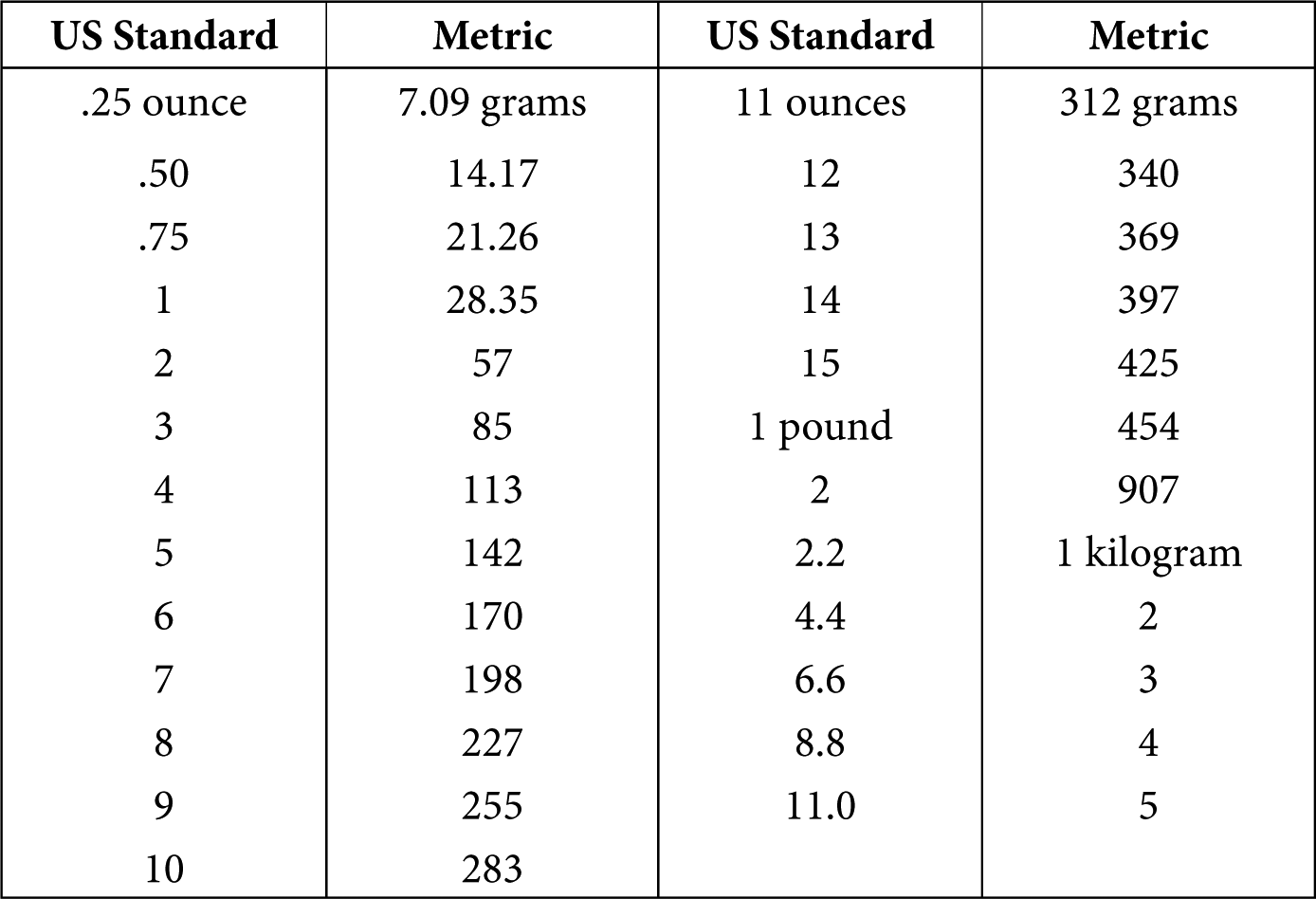
LIQUIDS
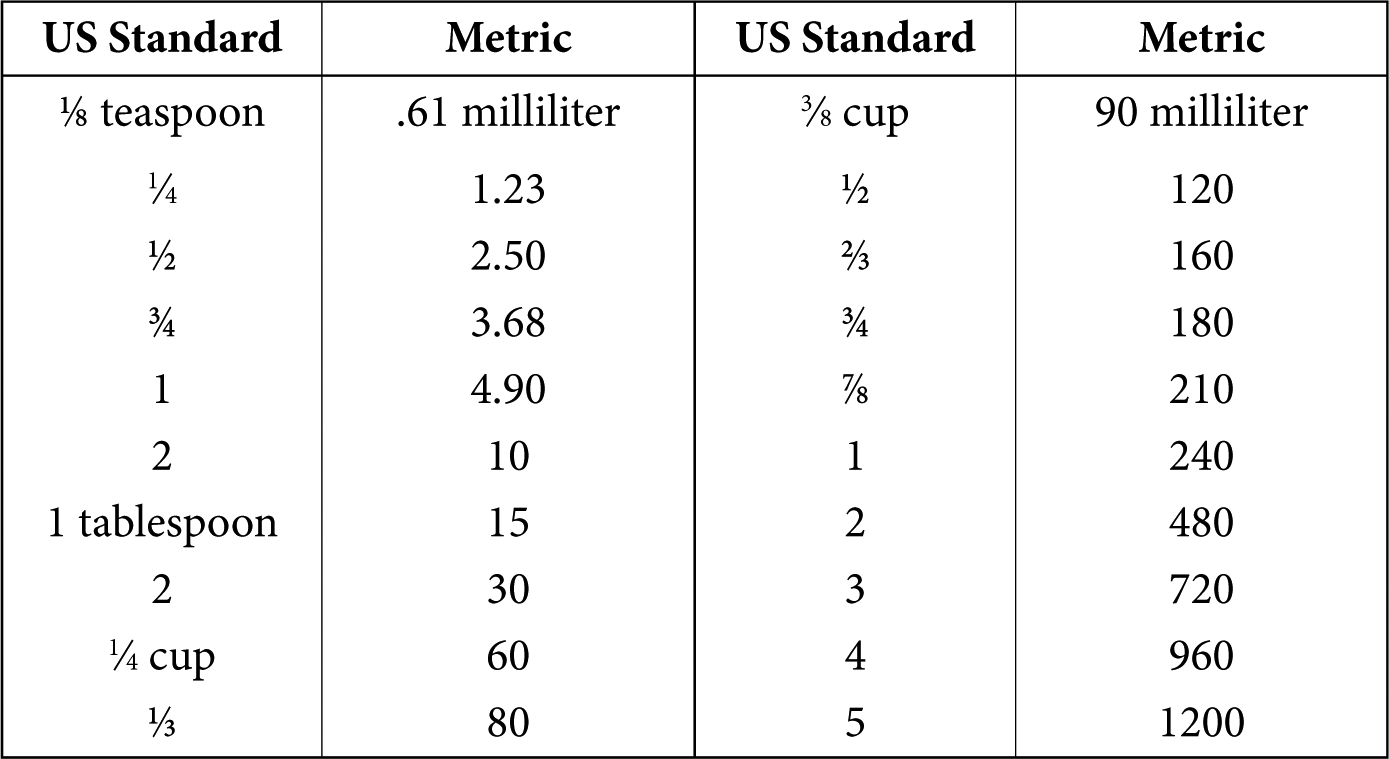
CONVERSION FORMULAS
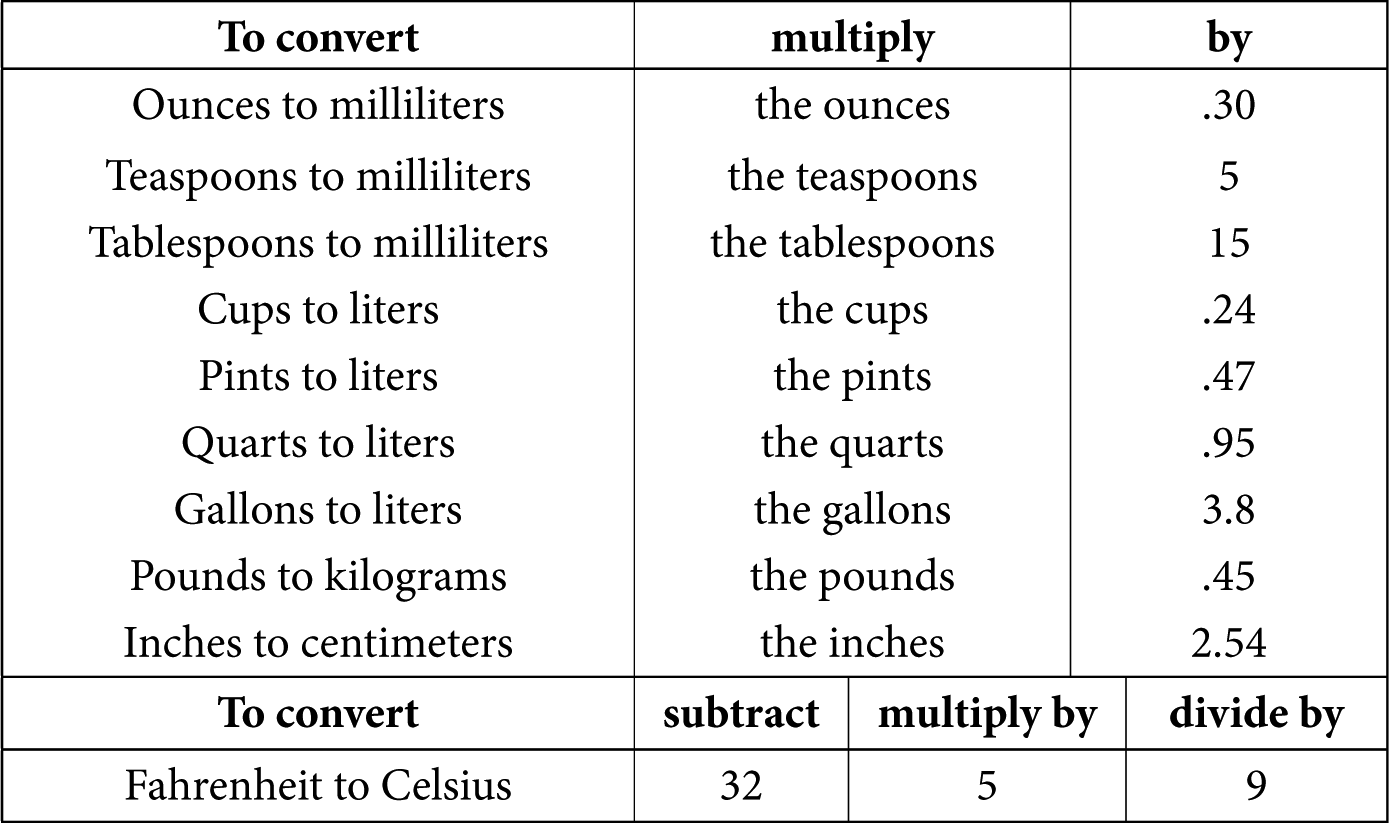
SAUSAGE SUPPLIERS

Eldons Sausage and Jerky Supply
3808 N. Sullivan Rd.
Bldg. 7, Ste. M
Spokane Valley, WA 99216
(800) 352-9453
www.eldonsausage.com
LEM Products Direct
4440 Muhlhauser Rd., Ste. 300
West Chester, OH 45011
(877) 336-5895
www.lemproducts.com
PS Seasoning & Spices
216 W. Pleasant St.
Iron Ridge, WI 53035
(800) 328-8313
www.psseasoning.com
The Sausage Source
3 Henniker Rd.
Hillsboro, NH 03244
(800) 978-5465
www.sausagesource.com
Stuffers Supply Company
22958 Fraser Hwy.
Langley, BC V2Z 2T9 Canada
(800) 615-4474
www.stuffers.com
Casings
DeWied International, Inc.
5010 East IH-10
San Antonio, TX 78219
(800) 992-5600
www.dewied.com
Spices
Atlantic Spice Company
2 Shore Rd., Route 6A
North Truro, MA 02652
(800) 316-7965
www.atlanticspice.com
Morton Salt Company
123 North Wacker Dr.
Chicago, IL 60606
(312) 807-2000
www.mortonsalt.com
San Francisco Herb Co.
250 14th St.
San Francisco, CA 94103
(800) 227-4530
www.sfherb.com
 | CHAPTER ONE
| CHAPTER ONE
THE HISTORY OF SAUSAGE
T he history of sausage making is a most interesting one. The word sausage is derived from the Latin word salsus , literally meaning salted or preserved. Sausages and salamis were originally made out of bare necessity, like clothes and shelter, as a way of preserving meat without refrigeration. The earliest reference I could find was from the Greek poet, Homer, who wrote about 2,800 years ago of roasting sausage in the Odyssey . Homer describes the wanderings of Odysseus and his decision to cook up a batch of sausage.
Sausage was made and devoured in huge amounts by the Babylonians some 1,500 years ago. The Greeks had a name for it oryae and had specific names for other types of preserved meats also. Fifth century BC literature refers to salami, a sausage which is thought to have originated in the city of Salamis on the east coast of Cyprus.
As sausage became popular, Epicharmus wrote a play called Orya , which in plain English means The Sausage . Around 228 AD someone got the brilliant idea of writing a cookbook, and what did it have in it?sausage recipes! The odd thing is that in present times, there are few cookbooks around that have sausage-making recipes in them. Recipes using sausage, yes! How to make it yourself, no!
The discovery of various spices which helped to preserve meat and enhance flavor prompted the development of a tasty, appetizing food now popularly known as dry sausage. Spices were widely used in the preparation of many foods, and the demand for them grew steadily. Huge trade empires resulted from this cry for spices and other popular goods which in turn led to wars, piracy, and four centuries of struggle. Christopher Columbus went in search of new trade routes to the Orient. Marco Polo, Vasco DaGama, Magellan, and Hendrick Hudson explored the waters to discover the shortest route to the East. Practically every country in the world has its own type of sausage, whether the recipes were stolen from their neighbors and changed, or they were totally concocted on their own.
The sausage makers of small farm villages were developing their own distinctive type of sausage. Of course, there were various contributing factors that made each villages sausage unique in its own taste. Custom, availability of ingredients, and climate were great influences .
Just for instance, Northern Europe had periods of cold weather during which fresh or semifresh meat products would keep. The process of smoking meat developed in this area as a means of aiding in the preservation of meat. In comparison, Southern Europe is hot, you bet! Consequently, this particular part of Europe developed the dry sausage which did not need any refrigeration at all. The Italian climate encouraged the growth of many, and I mean many, different dry sausages. What the whole thing boils down to is the fact that people living in particular areas grew fond of certain types of sausage, and the method of preparation became standardized within that town or community. You can readily see how each place developed its own traditions.
And that brings us to a little tidbit of information which you may already know. The popular sausages of this day and age derive their names from those villages I previously mentioned or, in some cases, huge cities. Bologna originated in the town of Bologna in Northern Italy; Thuringia sausage from the German province of Thuringia; Berliner from its home city of Berlin in Germany; Genoa salami from Genoa; Lyons sausage from Lyons, France; Milano sausage came from Milan, Italy, and so on.
The American Indian aided in the widespread popularity of sausage also. He mixed chopped dried buffalo or venison meat with dried berries and shaped the mixture into cakes for use later on in the year. The American pioneers did their part too, bringing their own recipes with them from across the Atlantic. Not having a large variety of spices available to them before coming to America, they created new sausages upon arrival.


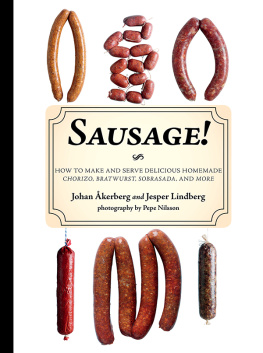

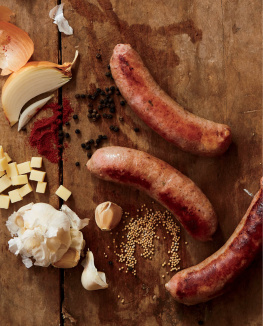
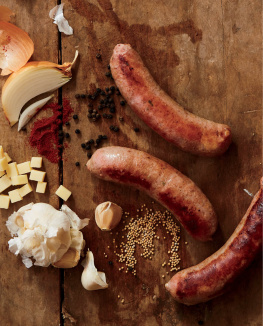
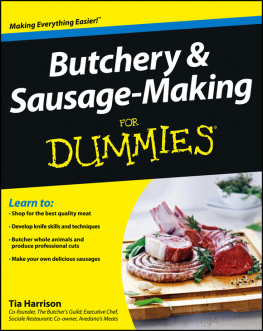
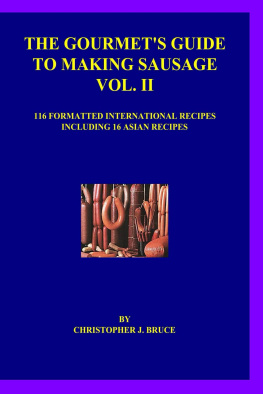





 | CHAPTER ONE
| CHAPTER ONE